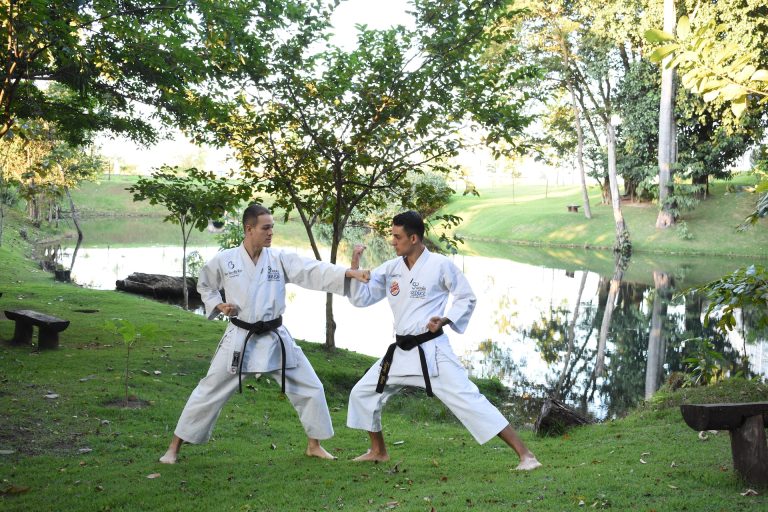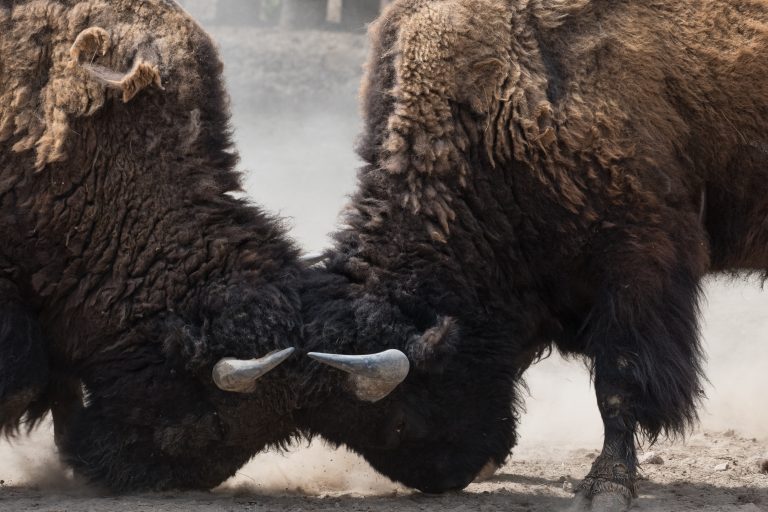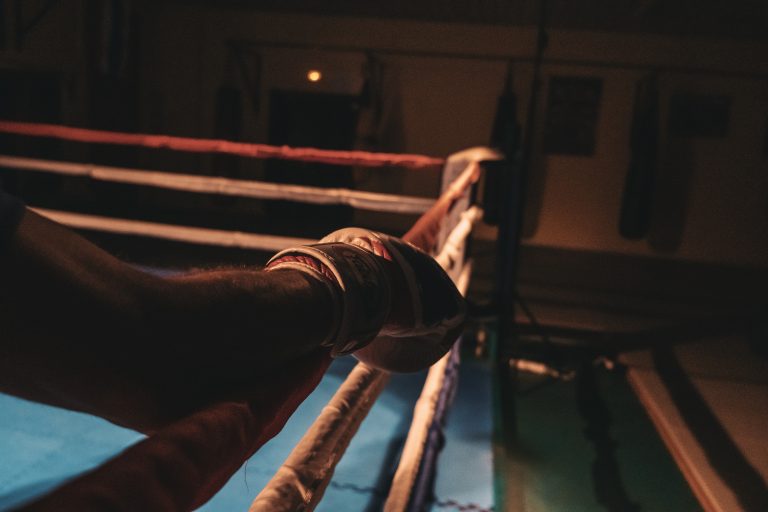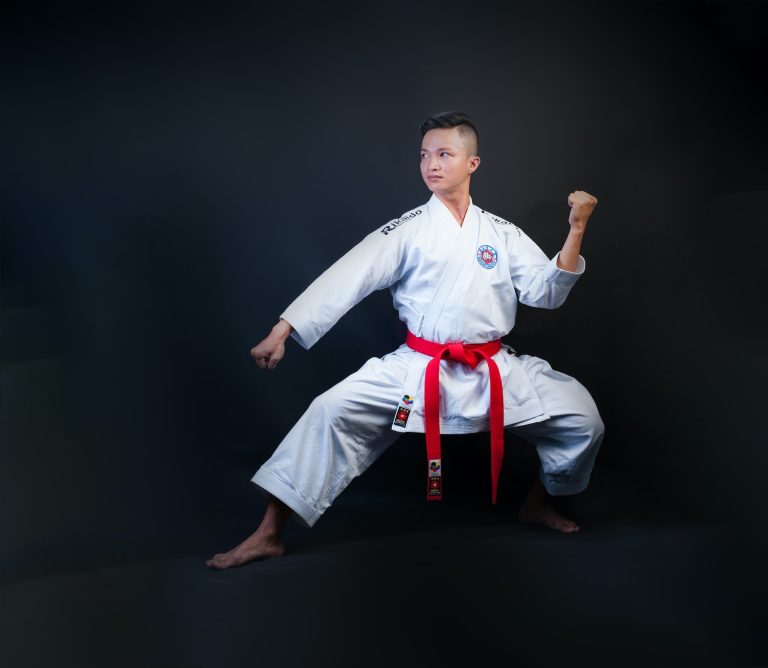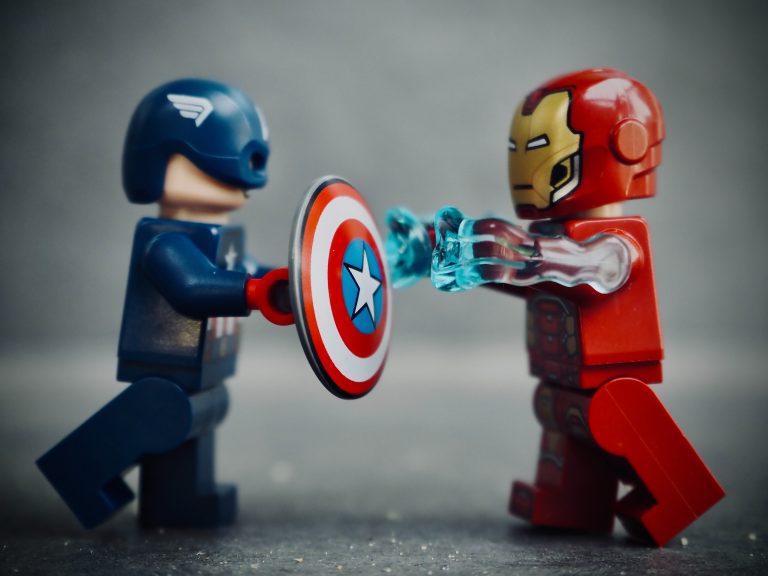How does Karate work? A comprehensive guide to the martial art
If you have ever seen a karate match or movie, you might have wondered how those moves work. Karate is an ancient martial art that originated in Okinawa, Japan. It was developed to help people defend themselves in a time when weapons were limited. Today, karate has evolved into a sport, and people practice it for fitness, self-defense, and competition.
In this guide, we will explore how karate works and what makes the martial art so effective.
What is Karate?
Karate is a martial art that involves using your hands, feet, and other body parts as weapons. It is a form of self-defense that teaches you to use your body as a weapon. Karate emphasizes speed, power, and precision.
The word „karate“ means „empty hand,“ which reflects the fact that karate practitioners use their hands and feet as weapons. Karate is more than just physical movements; it also includes mental discipline, meditation, and breathing techniques.
How does Karate work?
Karate uses a combination of techniques, which include strikes, kicks, blocks, and throws. These techniques are executed with precision and speed to maximize their impact. Many of the techniques in karate are designed to strike pressure points or vital areas of the body to immobilize an attacker quickly.
One of the unique features of karate is its focus on using the body’s natural movements to generate power. Karate practitioners use a variety of techniques to improve their power, speed, and effectiveness. These techniques include:
Kime
Kime is a term used in karate that refers to the use of the body’s natural momentum to generate power. It involves locking the body at the moment of impact to transfer maximum force to the target.
Kiai
Kiai is a technique used to generate power through the breath. It involves exhaling sharply as you strike to create maximum impact.
Sanchin
Sanchin is a posture used in karate that improves stability and power by engaging the core muscles of the body. It involves standing with feet shoulder-width apart, knees slightly bent, and arms crossed over the chest.
Karate also has a strong emphasis on mental discipline, which helps practitioners to focus their minds and stay calm under pressure. This mental discipline is achieved through meditation and breathing techniques that help to calm the mind and reduce stress.
Styles of Karate
There are several styles of karate, and each has its unique characteristics. Some of the most popular styles of karate include:
Shotokan
Shotokan is one of the most popular styles of karate. It emphasizes long, straight movements and powerful techniques.
Goju-Ryu
Goju-Ryu is a style of karate that focuses on circular movements and joint locks. It also emphasizes breathing and meditation techniques.
Shito-Ryu
Shito-Ryu is a style of karate that incorporates elements of other martial arts, including judo and aikido. It also emphasizes the use of close-range techniques and quick movements.
Benefits of Karate
Karate offers numerous benefits, both physical and mental. Some of the benefits of practicing karate include:
– Improved cardiovascular fitness
– Increased flexibility and range of motion
– Improved balance and coordination
– Increased strength and power
– Reduced stress and anxiety
– Improved mental focus and concentration
– Increased self-confidence
How Does Karate Work: Answering the Most Frequently Asked Questions
What is Karate?
Karate is a martial art that originated in Okinawa, Japan. The word „karate“ means „empty hand“ in Japanese and refers to the use of punches, kicks, and strikes without weapons. Karate has become a popular martial art worldwide and is often practiced as a sport, a form of exercise, or for self-defense.
How does Karate work?
Karate focuses on using a combination of physical movements, mental focus, and breathing techniques to improve health and protect oneself. Practitioners of Karate learn various techniques such as strikes, kicks, blocks, and throws that are designed to quickly disable an opponent.
What are the benefits of practicing Karate?
There are numerous benefits to practicing Karate, including improving physical fitness, increasing flexibility, honing mental focus and discipline, and gaining self-confidence. Karate also teaches self-defense skills, which can be useful in real-life situations.
Is Karate suitable for all ages?
Yes, Karate is suitable for all ages, from young children to older adults. Children can benefit from Karate by learning self-defense and developing discipline and self-confidence, while older adults can improve their physical fitness and mental focus. Karate is also a great activity for families to do together.
Do I need any special equipment to start practicing Karate?
To get started with Karate, you will need a uniform called a „gi.“ You may also need protective gear such as gloves, a mouthguard, and a groin protector. As you progress in your training, you may also want to invest in other equipment such as training pads, punching bags, or wooden dummies.
What are the different levels in Karate?
Karate has a ranking system based on colored belts, starting with white for beginners and progressing through yellow, orange, green, blue, purple, brown, and black. The black belt is further divided into ten degrees or „Dan“ levels, with the highest level being tenth-degree black belt.
Can Karate help me to defend myself against an attacker?
Yes, Karate teaches practical self-defense techniques that can be effective in real-life situations. However, it’s important to understand that self-defense is not just about physical techniques but also includes awareness, avoidance, and de-escalation skills to prevent and avoid dangerous situations.
Is Karate a competitive sport?
Yes, Karate is a competitive sport that has been included in the Olympic Games since 2020. Competition involves sparring with an opponent within a set of rules governing technique, scoring, and safety. Karate competition is a great way to showcase one’s skills and test oneself against others.
How long does it take to become proficient in Karate?
The time required to become proficient in Karate can vary depending on the individual’s dedication and natural ability, as well as the style of Karate being practiced. Generally, it takes around three to five years of regular practice to earn a black belt and become proficient in Karate.
Can I practice Karate if I have a physical disability?
Yes, Karate can be adapted to suit individuals with physical disabilities, and many Karate practitioners have successfully overcome physical challenges to become skilled martial artists. There are also specialized Karate programs designed for individuals with disabilities, which can provide a supportive and inclusive environment.
Final Thoughts
Karate is a fascinating martial art with a rich history and a multitude of benefits, from improving physical fitness to developing self-confidence and self-defense skills. Whether you are interested in Karate for sport, exercise or personal development, it’s important to find a qualified instructor and practice regularly to see the full benefits of this fantastic martial art.
How to Learn Karate – Step by Step Guide
Karate is a martial art that originated in Japan and emphasizes the use of punches, kicks, and strikes for self-defense. It is a popular form of martial art that not only improves physical fitness, but also enhances mental discipline, focus, and self-confidence. If you’re interested in learning karate, this step-by-step guide will provide you with the necessary information to get started.
Step 1: Find a Good Karate School
The first step in learning karate is to find a good karate school that offers quality instruction. Look for a school with a certified instructor who has years of experience teaching karate to beginners. Also, check the school’s reputation and read feedback from other students before making a decision. Remember that the quality of instruction is crucial, so do your research and choose a good school.
Step 2: Learn Basic Karate Terminology
Before attending your first karate class, it’s essential to learn some basic karate terminology. This will help you to follow instructions from your instructor and communicate effectively with other students. Some of the essential karate terms include:
- Karate-Do: The way or art of karate.
- Dojo: The training hall or gym where karate classes are held.
- Karateka: Someone who practices karate.
- Kihon: Basic karate techniques or drills.
- Kata: A series of prearranged martial arts movements that simulate an attack and defense against multiple opponents.
- Kumite: Controlled sparring or fighting with an opponent.
Step 3: Understand the Basic Stances and Footwork
A significant part of karate training is mastering the basic stances and footwork. These are the foundational skills that enable you to perform techniques with balance and power while maintaining proper form. Here are some of the basic stances and footwork you need to learn:
- Hachiji-dachi: The natural stance where feet are shoulder-width apart and toes are pointing straight ahead.
- Zenkutsu-dachi: The front stance where one foot is forward, and the other foot is back with both feet pointing forward.
- Kiba-dachi: The horse stance where both feet are shoulder-width apart, and toes are pointing outward.
- Mawashi-geri: A roundhouse-kick where you pivot on the ball of your supporting foot.
- Shikodachi: The sumo stance where feet are shoulder-width apart, and toes are pointing outward at a 45-degree angle.
Step 4: Master Basic Karate Techniques
Once you are comfortable with the basic stances and footwork, it’s time to learn the basic karate techniques. These include punches, kicks, blocks, and strikes. Here are some of the essential techniques you need to master:
- Gyaku-zuki: A reverse punch where the fist comes from the hip and extends straight out.
- Mae-geri: A front kick where you lift your knee high and extend your foot forward.
- Age-uke: A rising block where you bring your arm up at a 45-degree angle to block an incoming attack.
- Gedan-barai: A downward block where you bring your arm down at a 45-degree angle to block an incoming attack.
- Shuto: A knife-hand strike used to deliver a powerful blow to your opponent’s neck or temple.
Step 5: Practice, Practice, Practice
Like any other physical skill, karate requires practice to master. Make sure to attend your karate classes regularly and practice what you’ve learned at home. The more you practice, the better you’ll get, and the more quickly you’ll progress in your training. Remember that patience and determination are crucial to mastering karate.
In conclusion, learning karate takes time, dedication, and hard work. By following this step-by-step guide, you’ll be well on your way to becoming a proficient karateka. Remember to choose a good karate school, learn basic terminology, master basic stances and footwork, learn basic techniques, and practice regularly. With time and persistence, you can become an accomplished karate master.
Inhaltsverzeichnis

